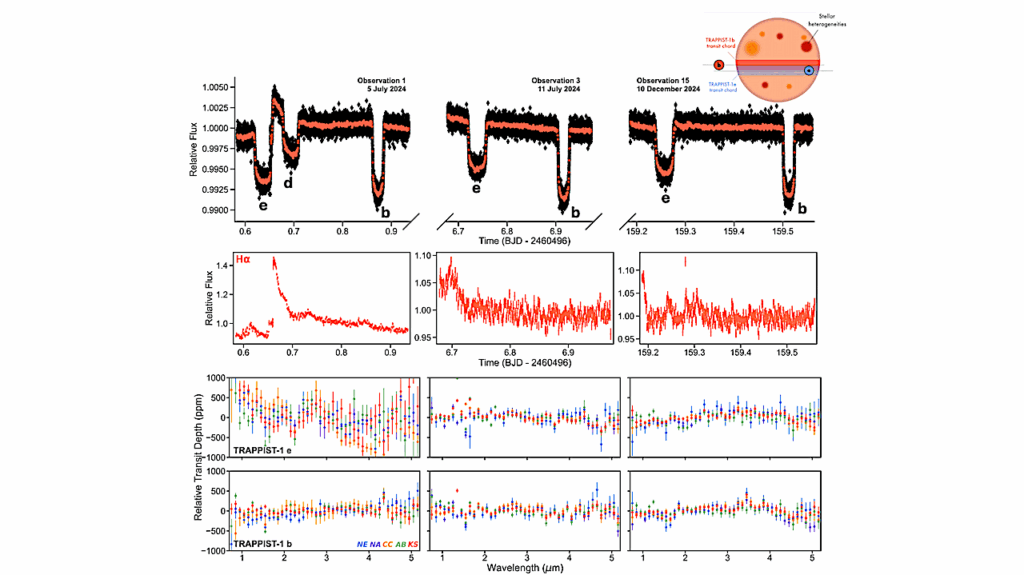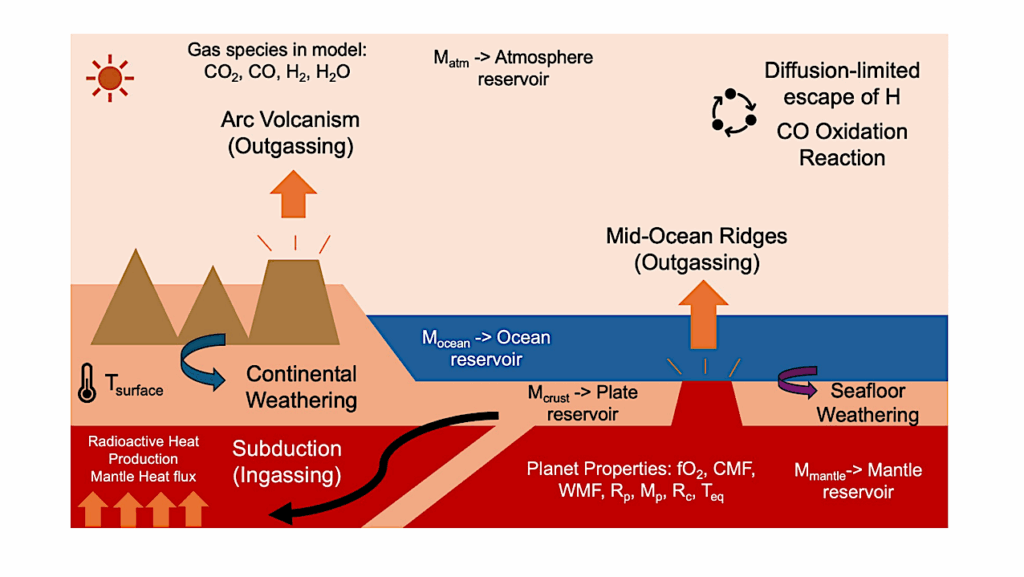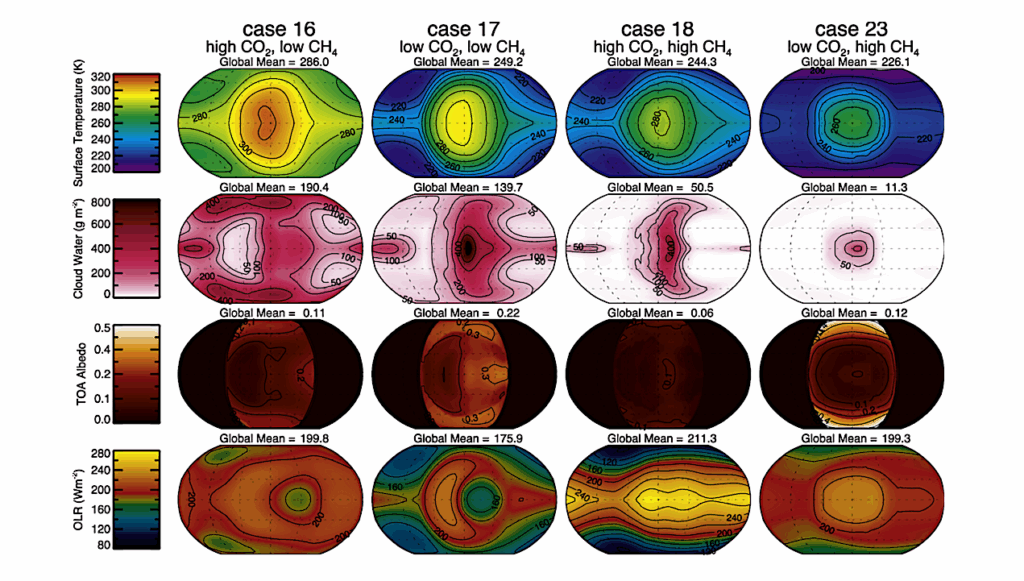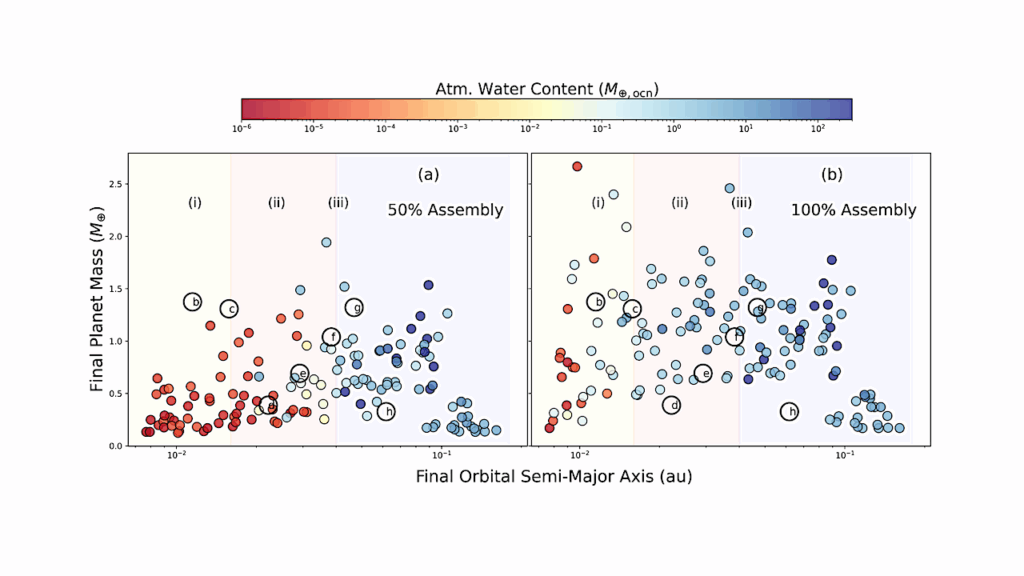Predicting the Extreme Ultraviolet Radiation Environment of Exoplanets Around Low-Mass Stars: the TRAPPIST-1 System

The high energy radiation environment around M dwarf stars strongly impacts the characteristics of close-in exoplanet atmospheres, but these wavelengths are difficult to observe due to geocoronal and interstellar contamination.
On account of these observational restrictions, a stellar atmosphere model may be used to compute the stellar extreme ultraviolet (EUV; 100 – 912 Å) spectrum. We present a case study of the ultra-cool M8 dwarf star, TRAPPIST-1, which hosts seven transiting short-period terrestrial sized planets whose atmospheres will be probed by the James Webb Space Telescope.
We construct semi-empirical non-LTE model spectra of TRAPPIST-1 that span EUV to infrared wavelengths (100 Å – 2.5 μm) using the atmosphere code PHOENIX. These upper-atmosphere models contain prescriptions for the chromosphere and transition region and include newly added partial frequency redistribution capabilities. In the absence of broadband UV spectral observations, we constrain our models using HST Lyα observations from TRAPPIST-1 and GALEX FUV and NUV photometric detections from a set of old M8 stars (>1 Gyr).
We find that calibrating the models using both data sets separately yield similar FUV and NUV fluxes, and EUV fluxes that range from (1.32 – 17.4) × 10−14 ergs s−1 cm−2. The results from these models demonstrate that the EUV emission is very sensitive to the temperature structure in the transition region. Our lower activity models predict EUV fluxes similar to previously published estimates derived from semi-empirical scaling relationships, while the highest activity model predicts EUV fluxes a factor of ten higher.
Results from this study support the idea that the TRAPPIST-1 habitable zone planets likely do not have much liquid water on their surfaces due to the elevated levels of high energy radiation emitted by the host star.
Sarah Peacock, Travis Barman, Evgenya L. Shkolnik, Peter H. Hauschildt, E. Baron
(Submitted on 14 Dec 2018)
Comments: 13 pages, 5 figures, accepted to ApJ
Subjects: Solar and Stellar Astrophysics (astro-ph.SR); Earth and Planetary Astrophysics (astro-ph.EP)
Cite as: arXiv:1812.06159 [astro-ph.SR] (or arXiv:1812.06159v1 [astro-ph.SR] for this version)
Submission history
From: Sarah Peacock
[v1] Fri, 14 Dec 2018 20:42:22 UTC (979 KB)
https://arxiv.org/abs/1812.06159
Astrobiology








